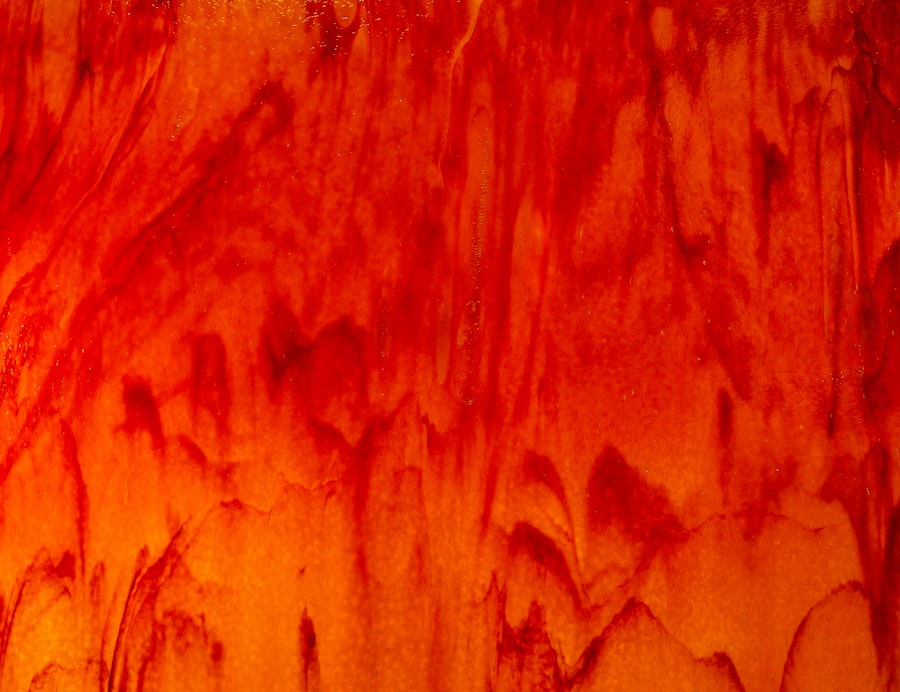When you consider laser hair removal, it’s essential to grasp how the process works. At its core, laser hair removal utilizes concentrated beams of light to target and destroy hair follicles. The procedure is designed to be both effective and efficient, allowing you to achieve long-lasting results.
During your session, a trained technician will direct the laser at the areas you wish to treat. The pigment in your hair absorbs the light, which then converts to heat, damaging the follicle and inhibiting future hair growth. This method is particularly effective for individuals with dark hair and light skin, as the contrast allows the laser to work more efficiently.
Before undergoing the treatment, you will likely have a consultation where your technician assesses your skin type and hair color. This assessment is crucial because it helps determine the appropriate laser settings for your specific needs. You may also be advised to avoid sun exposure and certain medications that could increase sensitivity before your appointment.
The treatment typically requires multiple sessions for optimal results, as hair grows in cycles, and not all hair is in the same growth phase at any given time.
Key Takeaways
- Laser hair removal targets hair follicles to reduce hair growth
- Following post-laser hair removal care instructions is crucial for optimal results and to prevent complications
- Pros of shaving after laser hair removal include maintaining smooth skin, while cons include potential skin irritation
- Shaving can affect the results of laser hair removal by disrupting the hair growth cycle
- Tips for shaving after laser hair removal include using a clean, sharp razor and avoiding shaving over irritated skin
The Importance of Following Post-Laser Hair Removal Care Instructions
Minimizing Discomfort and Promoting Healing
To promote healing and minimize discomfort, it is essential to follow the guidelines provided by your technician. This may include avoiding sun exposure, refraining from hot showers or baths, and steering clear of harsh skincare products for a few days. By taking these precautions, you can help your skin recover more quickly and effectively.
The Importance of Post-Care Instructions
Following post-care instructions can significantly impact the overall effectiveness of the treatment. If you neglect these guidelines, you may experience adverse effects such as irritation or even pigmentation changes. Your skin needs time to heal and adjust after the procedure, and proper care can enhance the results of your laser hair removal.
Achieving Smooth, Hair-Free Skin
By prioritizing your skin’s health during this recovery period, you set yourself up for success in achieving smooth, hair-free skin. Remember, proper post-care is key to achieving the best possible results from your laser hair removal treatment.
Pros and Cons of Shaving After Laser Hair Removal

When it comes to shaving after laser hair removal, there are both advantages and disadvantages to consider. On one hand, shaving can be a convenient way to manage any regrowth that may occur between sessions. Since laser hair removal targets the hair follicle, some hair may still grow back in the interim, and shaving allows you to maintain a smooth appearance without interfering with the treatment’s effectiveness.
Additionally, shaving is less abrasive than other hair removal methods like waxing or plucking, which can irritate sensitive skin post-treatment. On the other hand, there are potential downsides to shaving after laser hair removal that you should be aware of. For instance, if you shave too soon after your treatment, you risk irritating your skin or causing ingrown hairs.
It’s crucial to give your skin adequate time to heal before introducing any form of hair removal. Furthermore, if you’re not careful while shaving, you could inadvertently damage the treated area or lead to complications such as cuts or infections. Weighing these pros and cons will help you make an informed decision about whether or not to shave after your sessions.
How Shaving Affects the Results of Laser Hair Removal
| Shaving Frequency | Effect on Laser Hair Removal Results |
|---|---|
| Not shaving before treatment | Can cause burning or discomfort during treatment |
| Shaving 24-48 hours before treatment | Allows the laser to target the hair follicle more effectively |
| Shaving between treatments | Keeps the area smooth and allows for better laser penetration |
Shaving can have a significant impact on the results of your laser hair removal treatments. When done correctly and at the appropriate time, shaving can help maintain a smooth appearance without hindering the effectiveness of the laser treatment. Since laser hair removal works by targeting the hair follicle beneath the skin’s surface, shaving does not interfere with this process as long as it is performed after the skin has healed from the procedure.
In fact, many dermatologists recommend shaving as a way to manage any regrowth while waiting for your next session. However, if you shave too soon after your treatment or use improper techniques, you could compromise your results. For example, shaving over irritated or sensitive skin can lead to further inflammation or even infection.
Additionally, if you shave too frequently or aggressively, you might disrupt the healing process and cause complications that could affect how well the laser treatment works in the long run. Therefore, understanding how shaving interacts with laser hair removal is crucial for achieving optimal results.
Tips for Shaving After Laser Hair Removal
If you decide to shave after undergoing laser hair removal, there are several tips that can help ensure a safe and effective experience. First and foremost, wait until your skin has fully healed before reaching for a razor. This typically means waiting at least a few days post-treatment; however, always consult with your technician for personalized advice based on your skin’s condition.
Once you’re ready to shave, use a clean, sharp razor to minimize the risk of irritation or cuts. Additionally, consider using a gentle shaving cream or gel designed for sensitive skin. This can help create a protective barrier between the razor and your skin, reducing friction and irritation during shaving.
Always shave in the direction of hair growth rather than against it to minimize the risk of ingrown hairs and irritation. Finally, after shaving, apply a soothing lotion or aloe vera gel to calm any potential redness or irritation that may arise from the process. By following these tips, you can enjoy smooth skin while minimizing any adverse effects.
Alternatives to Shaving After Laser Hair Removal

If shaving doesn’t appeal to you after laser hair removal or if you’re concerned about potential irritation, there are alternative methods for managing any regrowth that may occur between sessions. One option is using depilatory creams specifically formulated for sensitive skin. These creams dissolve hair at the surface level without requiring any physical scraping or cutting that could irritate freshly treated skin.
Another alternative is opting for trimming instead of shaving. Using scissors or an electric trimmer allows you to manage hair length without risking cuts or irritation associated with traditional razors. This method can be particularly useful if you’re looking for a quick fix without compromising your skin’s health post-treatment.
Additionally, some individuals find that simply allowing their hair to grow out until their next laser session is a viable option; this approach eliminates any risk associated with shaving altogether.
Common Misconceptions About Shaving After Laser Hair Removal
There are several misconceptions surrounding shaving after laser hair removal that can lead to confusion and potentially hinder your results. One common myth is that shaving will interfere with the effectiveness of laser treatments. In reality, as long as you wait until your skin has healed properly, shaving does not affect how well the laser works since it targets the follicle beneath the skin’s surface.
While methods like waxing or plucking can indeed disrupt the healing process and irritate sensitive skin, shaving is generally considered a safer option when done correctly. Understanding these misconceptions can help you make informed decisions about how to manage any regrowth while ensuring that your laser hair removal journey remains successful.
Consulting with Your Dermatologist About Shaving After Laser Hair Removal
Before making any decisions about shaving after your laser hair removal sessions, it’s wise to consult with your dermatologist or technician. They can provide personalized advice based on your specific skin type and treatment history. During this consultation, don’t hesitate to ask questions about when it’s safe to shave and what techniques would be best suited for your skin’s condition post-treatment.
Your dermatologist can also help clarify any misconceptions you may have about shaving and its impact on your results. They can guide you through proper aftercare practices and recommend suitable products that will minimize irritation while keeping your skin healthy. By seeking professional guidance, you can ensure that you’re making informed choices that align with your goals for smooth, hair-free skin following laser treatments.
In conclusion, understanding the intricacies of laser hair removal and its aftercare is essential for achieving optimal results. By being informed about the process and following proper guidelines—especially regarding shaving—you can enjoy a smoother experience throughout your journey toward hair-free skin. Always prioritize communication with your dermatologist to address any concerns or questions that arise along the way; this partnership will ultimately enhance your overall satisfaction with the treatment outcomes.
If you are considering laser hair removal, you may be wondering if you should shave right after the treatment. According to a recent article on InLaserHairRemoval.com, it is generally recommended to wait a few days before shaving after laser hair removal. Shaving too soon can irritate the skin and potentially cause damage to the hair follicles that were targeted during the treatment. It is important to follow the aftercare instructions provided by your technician to ensure the best results and minimize any potential side effects.
FAQs
What is laser hair removal?
Laser hair removal is a cosmetic procedure that uses a concentrated beam of light (laser) to remove unwanted hair. The light is absorbed by the pigment in the hair follicles, which damages the follicle and inhibits future hair growth.
Should you shave right after laser hair removal?
It is generally recommended to avoid shaving immediately after laser hair removal. The skin may be sensitive and prone to irritation, and shaving could exacerbate these issues. It is best to wait until any redness or irritation has subsided before shaving.
How long should you wait to shave after laser hair removal?
It is typically advised to wait at least 24-48 hours after laser hair removal before shaving. This allows the skin to recover and reduces the risk of irritation or complications.
What are the potential risks of shaving right after laser hair removal?
Shaving immediately after laser hair removal can increase the risk of skin irritation, redness, and ingrown hairs. It may also interfere with the healing process and potentially lead to complications such as burns or blisters.
What are some alternative hair removal methods to shaving after laser hair removal?
Some alternative hair removal methods that can be used after laser hair removal include using depilatory creams, waxing (if approved by your provider), or using a gentle exfoliating scrub to help remove treated hair. It is important to consult with your provider before trying any alternative methods to ensure they are safe for your skin.





